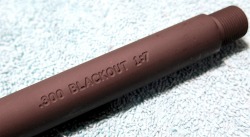
The .300 Blackout is an effective round that bridges some of the wide gap between a .223 and a .308 as well as allowing an AR15 platform rifle to encroach on the ballistics territory of the venerable AK 47. Plus the 300 BLK has the benefit of easily going subsonic making it about as quiet as possible given the mechanical noise of operating a rifle’s action. Adding to the quiet excitement is that the difference between a traditional AR15 in .223/5.56 and one in 300 BLK is little more than a barrel swap. That’s right, everything else might be interchangeable between the two.
You should find this post very helpful. If you want more detailed specifics about your AR-15, see the AR-15 Rifle Builder’s Manual: An Illustrated, Step-by-Step Guide to Assembling the AR-15 Rifle.
- Reaser, Rob (Author)
- English (Publication Language)
- 72 Pages - 03/14/2016 (Publication Date) - CreateSpace Independent Publishing Platform (Publisher)
The first thing you will need, of course, is a decent .300 AAC Blackout barrel.
Palmetto State Armory sells a variety of .300 barrels – shop here to see what they have.
Optics Planet also sells a variety of .300 barrels – shop here to see what they have.
Why the .300 Blackout?
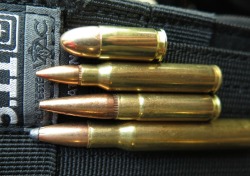
Wildcat cartridges can successfully address niche ammo needs, but unless the specific cartridge was blessed by Sammy (properly SAAMI or Sporting Arms and Ammunition Manufacturers’ Institute), the cartridge would not get the widespread support needed to be taken seriously by the big gun and ammo manufacturers let alone the general shooting public. AAC, or the Advanced Armament Corporation in collaboration with Remington Defense ironed out the kinks in the wildcat .300 Whisper cartridge getting formal SAAMI joy in 2011 which is why the .300 Blackout still has that new car smell.
The .300 Blackout is a 30 caliber solution that grew from a set of needs not the least of which included the use of existing AR-style magazines while maintaining the same mag capacity, the use of M4-style platform uppers and lowers; being ballistically similar to the AK 47 round of 7.62mm x 39mm, and be a higher-mass barrier-penetrating bullet while maintaining low recoil and high performance through short suppressed barrels. Oh, and best of all, easily running both supersonic and subsonic in the same rifle with absolutely no change in the gun. In fact, it is this latter capability that 300 BLK owners find most attractive. So the .300 Blackout can drop a deer at 200 yards, or lob 30-cal lead downrange with little more noise than a cycling bolt.
AK 47 rifles are near impossible to run subsonic due to the gas system. And they are certainly not able to interchange between supersonic and subsonic on the fly. Major adjustments and tuning would be needed. In the case of the .300 Blackout, it is a cartridge deliberately made to run flawlessly in an AR rifle in both subsonic and supersonic. In fact, the high bullet weight of the subsonic 300 BLK ammo is not just to slow down the bullet (F=MA in Newtonian physics) but also to provide enough of an equal and opposite force to cycle a traditional AR bolt and buffer (Newton’s Third Law of Motion).
While the initial ballistics of a 300 BLK running subsonic are very similar to a .45 ACP, the bullet shape of a .300 Blackout provides a much better trajectory and deeper penetration. A 220 grain 45 caliber slug flying out the pipe of a handgun designed prior to 1911 is much like a forty-five caliber musket ball. On the other hand the .300 Blackout behaves more like a 7.62×39 round causing death hundreds of yards away. A .45 ACP will bounce off cowhide at distance while the 300 BLK should still shatter bone.
Walmart 300 Blackout Ammo Test

300 BLK ammo in the supersonic variety did pass my Walmart test. That means it is sitting on the shelf at the local Walmart right now. However, I was unable to locate any subsonic .300 Blackout ammo at the any nearby Walmarts. Of course, subsonic 300 BLK ammo was available at almost every gun store and big box sporting goods store I checked so the stuff is common. And the Walmart gun clerk did say they’ve had 300 BLK subsonic ammo in stock before, but it was elusive as 500 round bricks of .22 long rifle.
Related article: 10 Basic Tools For Your Armorer Kit
The ammo choices for 300 BLK in supersonic was varied across price and performance. I found plenty of boxes of 20 from $16 all the way up to almost $50. Subsonic rounds hovered around $20-$25 and there was rarely more than one choice at any given store.
As Simple as Swapping a Barrel
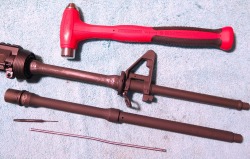
Changing a .223 AR 15 into a .300 Blackout can be as simple as swapping barrels. The complete upper, lower, magazines and gas system might work just fine with the 300 BLK. Usually there are a couple other parts that get changed out as well, but truly in a nutshell, it is just a barrel switch. So a best-case conversion to turn your .223 AR into a .300 Blackout is 1) remove your .223 barrel, and 2) install a 300 BLK barrel.
Required Armorer Tools
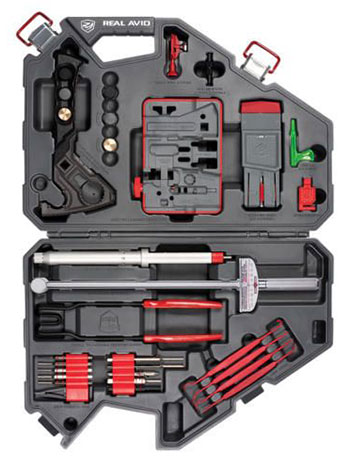
You don’t need a ton of tools to make this transfer, but you will need some. If you are planning on getting into regular AR-15 gunsmithing, however, it would be worthwhile to consider a complete armorer’s kit. That way you’re not buying a few products for this modification, then a few more for another, etc.

And if you’re a prepper, having these types of tools on hand would make you a great asset should some type of SHTF situation come our way. If this describes your interest, consider the Real Avid Armorer’s Master Kit pictured below:
Changing barrels on your standard direct impingement AR is fairly straightforward, but does require some tools. The undeniable tool is a barrel wrench which is usually part of a multi-function armorers tool. But in order to turn the barrel nut, you must remove the gas tube. And in order to remove the gas tube, you will need to remove the gas tube cross pin using a 5/32nds punch (gently push it out from left to right).
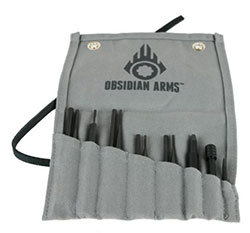
With the gas tube removed, you can unwind the barrel nut freeing the barrel from the upper receiver. You can reuse the gas tube if its in good shape and the right length, and maybe even reuse the gas block as well assuming it works with your barrel and handguard.
In my case, I opted for a new low profile gas block because I am going from a Magpul MOE polymer handguard mounted on a 5.56 barrel with an A2 (triangular) front post. The Midwest Industries free-floating handguard I’ll be shrouding the 300 BLK barrel with will need a new gas block. So it was Yankee Hill to the rescue.
Also Read: How To Trick Out A Cheap AR-15
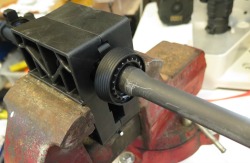
Backing up for a minute, there is an essential tool that makes barrel removal and installation every so much easier and that is an upper receiver vise block. The vise block is a blockish clamp that wraps the upper receiver like a glove allowing the whole unit to be clamped in a vise without concern of damaging or warping your upper receiver. Add a torque wrench to round out your toolset and you’re as good as done.
.300 Blackout Grunt Work
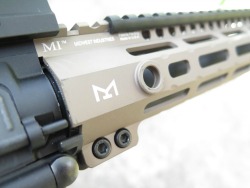
The .300 Blackout went into military service in July of 2015 when the Netherland’s Dutch Maritime Special Operations Force (NL-MARSOF) ordered 195 carbines chambered in 300 BLK. According to an uncited Wikipedia article on the .300 Blackout, it has an effective supersonic combat range of about 500 yards. Flying subsonic, 200 yards is pushing the limits of effectiveness outside of threats made of paper.
Now before anyone goes all sniper on me, most folks, and let’s be honest here, are not able to shoot reliably to 500 yards even under ideal conditions. In fact, 200 yards is a very reasonable and ethical hunting distance. In my particular case, I intend on hunting with this rifle in thick woods where a 50 yard or less shot is common. I grew up hunting in such places with a Winchester Model 94 30-30 which is an excellent “brush gun” as we liked to call them. Iron sights were plenty good at these distances.
I also intend to hunt with a suppressor, or silencer if you want to retain the original name that its inventor Hiram Maxim called them back in 1902; the “Maxim Silencer” to be exact. On a side note, a movie in 1946 was made about Hiram’s life and titled So Goes My Love. But reading about the movie, it doesn’t sound like there is any gunplay in it, let alone any silenced fire.
.300 Sound Suppression
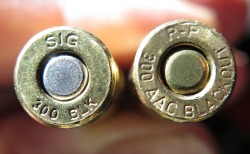
Factory loads of 300 BLK come in several popular bullet weights. In general, those bullets over 200 grains slide down the pipe under the 1100 feet per second speed of sound while anything lighter breaks the sound barrier with a boom. Since most of the powder is burned within the first nine inches of barrel, near total performance can be achieved in very short barrels. To avoid paperwork and a tax stamp and months of delay, I opted for a 16” barrel literally off the shelf at a local gun store.
I already had a SilencerCo Omega suppressor so adding a can to this build was a no-brainer. In fact, that Omega is most of the reason I went down the 300 BLK road in the first place. A suppressed subsonic .300 Blackout literally is only as loud as the bolt cycling and bullet impacting.

All this is not without a problem. And it’s potentially a big one. A .223 or 5.56 round will cycle into a 300 BLK barrel, and possibly the reverse is true. This means you have to practice proper ammo management. At no time can you risk mixing up or mixing together your mags or your ammo.
There are various solutions and products to keep your ammo act together. The Blackout Band is a silicon bracelet you wrap around your 300 BLK mags. Some folks run different colored mags, while others mark their mags in personal ways. I chose to dedicate Magpul’s sand colored mags to my .300 Blackout with the intent to dye them later to a more fun and useful color.
So at the moment, white mags for the Blackout. No exceptions. There is an ever growing number of tales where someone had a loose 300 BLK round that found it’s way into a .223 mag only to blow the gun apart when it was stripped off the top of the mag by the bolt and the trigger was pulled.
Not all ammo containers for the .223/5.56 platform are completely interchangeable. In fact, some are downright dangerous. But since .300 Blackout ammo is easily twice to three times the price of .223 rounds at a minimum, getting sloppy with Blackout ammo shouldn’t be a popular problem.
.300 Survival Applications
It should go without saying that a 30 caliber subsonic suppressed round with a 200 meter range should have endless uses. Hunting is obvious as is protection. But let’s put a finer point on that protection thing. A bolt cycling is noisy but only within a very limited sound radius. Add snow or thick brush or trees and the noise of a buffer spring boinging and bolt clanking will not travel far. And the thump of bullet impact is evidence that it’s too late to do anything about it. Unfortunately, the 30 caliber bullet leaving the muzzle under the speed of sound drops like a mountain pass after a hundred yards, and like a double-black diamond ski slope at 200 yards. Beyond that it’s ballistics curve would be a boat anchor.
The Downside of Loud

And speaking of sound suppression, if you ever plan on popping off a round indoors, you will want to minimize the bang or risk temporary disorientation and permanent hearing damage. Sorry to be a buzzkill here, but I do have trouble taking seriously anyone who plans on using a short-barreled AR or AR pistol with spiked muzzle brake as a home defense weapon.
One boom and it’s all over for most involved. Better get that first shot right because you will be too stunned for a follow up shot. Kind of like flash-banging yourself and loved ones.
Just as a gas-powered generator makes an unwanted and unavoidable racket, and a campfire makes unwanted smoke and smell, firearms make unwanted noise. So having a silent solution with more umph than a pistol is a good thing. And when things do go noisy, you have a 500 yard solution at your index finger’s fingertip.
Given that the 300 BLK is still young enough to have spots it’s not surprising that reloading your own brand is the go-to option for the more-than-curious. There are limited factory ammo options for subsonic bullet designs often leaving the big game hunter to settle for either throwing projectiles faster than sound or launching barely hollow-pointed varmint rounds downrange to settle the score. But the big news here is that there is actually a selection of subsonic 300 BLK ammo on the shelves of the big boxes. So something’s going in the right direction these days.
The Gas Impingement System
Now, changing over an ordinary gas impingement .223 AR15 into a .300 Blackout, we will complete the barrel change, add a free floating handguard, screw on a can, add then add the necessary accessories to bring the gun up to our survivalist standard, and head outdoors.
Look, I get it. There is no shortage of irony about a rifle that rivals a compound bow in hunting prowess. I hunt with a bow, and while a 50-yard shot is still something on the edge of my comfort zone, a 50-yard subsonic .300 Blackout shot is acceptable. But the more I thought about it, the more I considered blending grizzly bear shotgun wisdom with 300 BLK hunting.
There is no rule that says you cannot run both subsonic and supersonic ammo in the same mag. So imagine whitetail deer hunting in thick brush with the first round or two being subsonic and the rest being supersonic. Being a semi-auto AR-platform rifle, I imagine that the second shot could happen almost instantly, but if the target is on the move, all subsonic bets are off and sending any necessary rounds further downrange should be expected. Noise is not the problem now. Range and accuracy is.
Since my test bed AR had an A2 front sight post pinned to the .223 barrel, I took the opportunity to upgrade from the no-frills Magpul MOE handguard to a Midwest Industries free floating M-Lock aluminium handguard about nine inches long. The Midwest Industries handguards come in various lengths and attachment platforms. A detail I really appreciated was the five quick-detach ports; three up front, and two back by the receiver.
As the .223 barrel had an A2 front sight, I chose to abandon it and install a Yankee Hill mini gas block inside the free floating handguard. Since I’ll be running an optic on the top rail, I opted for some Magpul MBUS Pro Offset sights for backup and for longer distance shots. By the way, if you are wondering the difference between a handguard and a forend, the particular part name has to do with whether or not the specific piece of furniture is just for support or to protect your hand from burns. In the case of the AR platform, it is a handguard.
Wide AR-15 Receivers
Instead of swapping barrels, many of the Blackout-curious types will just build an entire upper dedicated to the 300 BLK and switch out the whole upstairs, sights and all. In my case, I was not excited about the DPMS AR 15 as a .223 in the first place, and didn’t mind making a dedicated Blackout gun. Plus, if your luck holds, you will have nothing more the cost of a barrel which is considerably less than an entire upper. And there is that in-between option where bolt and charging handle jump back and forth between calibers.

If you opt to say screw it, and just buy a dedicated .300 upper, shop here and here. Then you can just have them shipped to your house and placed on any existing lower you already have.
Magazine Management
As I noted in Part 1, there can be no mistakes with ammo. There is a chance that a .300 Blackout round can cycle into a .223 barrel to the point where it will fire upon a trigger pull. The results of such a mistake can be devastating to both shooter and gun.

But there is another factor that needs to be kept in mind and that is that 300 BLK ammo is widely available over the gun counter in both supersonic and subsonic varieties. And in some cases such as hunting, the shooter may want to switch between supersonic and subsonic on the fly.
In my case, I will run two 10 round orange-colored Magpul Pmag magazines while hunting. One is filled with my subsonic loads and the other with supersonic ones. That way I can carry subsonic for close range brush situations, but if something farther away presents itself, I can eject the subsonic mag, cycle out the chambered round if there is one, and then reload with a mag full of supersonic cartridges.
To keep my two Magpul 10-round orange hunting magazines separated I changed one key feature. I run a black baseplate on the supersonic package and keep the matching orange-colored one on the subsonic. Why that combo? I decided that if I’m needing subsonic in a darkness situation (not necessarily hunting) I need to know with certainty that I have the subsonic mag. If I have a black base plate, it will appear a black or not there under minor light.
On a lighter note, for more fun I use Magpul’s sand colored 30 round Pmags. But as mentioned before, the cost of ammo being what it is makes blasting 300 BLK round after .300 Blackout round downrange is questionably cost prohibitive. But in a nutshell, all my Magpul sand colored mags are .300 Blackout only. And I never run a orange-colored mag for .223/5/56. Never.
Dyeing Magpul Sand PMAGs

The Magpul’s sand-colored mags were never expected to remain sand colored, but dyed into another color the user prefers. With that in mind, I decided to drop some sand-colored magazines into RIT dye and see what happens. Since the dye color is totally up to the dyer, anything on the rainbow is fair game with camo and combinations also a possibility.
Due to the mess of dying something, I picked up a pot at the Goodwill and laid out tinfoil around the stove and counter. With about two quarts of boiling water in my pot, I dropped in the gutted mags (springs and followers removed) into the pot and stirred them around for 10 minutes. The dye set rapidly, but then slowly got darker. I ended up using about a third of the bottle of RIT dye. After another 10 minutes in a warm freshwater rinse and thorough drying, the mags were reassembled and good-to-go.
Subsonic and Supersonic Switch Hitter
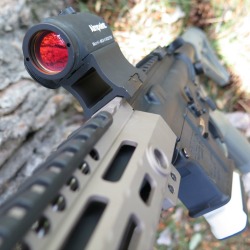
The ability to interchangeably run both supersonic and subsonic round through the same gun with the same bolt is truly revolutionary. But the ballistics don’t follow the same rules. So to be able to run either/or subsonic/supersonic rounds at whim means that you need keep your .300 ducks in a row, as well as your sights.
There is little similarity between the subsonic and supersonic trajectories so you will either need to memorize ballistics tables as well as know which round your sights are zeroed for. Or you can run dual sights. Luckily the limited range of the 300 BLK is something that iron sights can handle no matter the bullet weight. Sure, a 6x optic will give you an accuracy advantage, but any good shooter can squeeze off plenty of precision whether iron or glass.
Considering that I am using “hunting” as a euphemism for…whatever, I am interested in two no-brainer sighting solutions; one for supersonic and one for subsonic. Since I have many other longer range battle-ready options so maximizing the .300 Blackout’s long distance capabilities is not really all that practical when taking the long view. To justify the 300 BLK in a survivalist arsenal, one must maximize its strengths and minimize its weaknesses.
On this particular build, I zeroed the Aimpoint H-2 for the subsonic bullets at 50 yards, and zeroed the Magpul MBUS Pro Offset sights with the point of impact for supersonic bullets at 150 yards. Of note is that the stock front post has been replaced with Magpul’s MBUS Pro Enhanced Front Sight Post, a tiny screw-in after-market post that improves accuracy by reducing post thickness.
There is a stark contrast between sub and supersonic bullet drops. Flying below the speed of sound, a zeroed-at-50 220 grain bullet will drop almost 15 inches at 150 yards, and about 70 inches at 250 yards. Yes, the bullet drops almost six feet!
While a supersonic round zeroed at 150 yards will be an inch high at 50 yards, and less than a foot low at 250 yards. So you can see that the use of two independent sighting platforms is worth the effort.
Taking that sighting duality a step further, the option of running both subsonic and supersonic ammo in the same magazine. I can imagine where the first or top round or two are subsonic followed by the supersonic ones. This concept is not new.
A popular 12-gauge shotgun option here in bear country is to load the tube rotating between double-ought buckshot followed by slugs. And fans of the Taurus Judge handgun have been known to run alternating .45 Long Colts and .410 shotgun shells in their five-round cylinder.
.300 Blackout Suppressor Sound Test
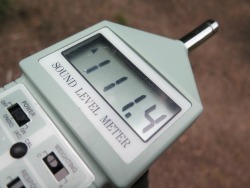
Running a suppressor on a subsonic .300 Blackout makes for an interesting option in survival/prepper guns. Although the 300 BLK has distance limits, the radius of effectiveness is up to you. And that is exactly why I turned one of my AR15s into a .300 Blackout and so should you. In my testing, the 300 BLK running subsonic was not all that quiet.
Certainly hearing safe, but much like a tiny firecracker going off. Anyone 50 yards away would probably ignore the sound if they even heard it, but closer up, there is definitely something going on. Of course I was in a very quiet area with little more than a slight breeze and a few birds disturbing the peace. Supersonic loads were a different story. Even through the silencer, they were still a pretty good crack.
My audio testing equipment produced numbers in the 120 dB range for supersonic bullets exiting through the Omega suppressor, and 111 dB for subsonic rounds. A 95 dB sound is like a New York subway, or public bathroom hand dryer, so 111 is not excessive, but certainly not silent. Popping off a couple subsonic rounds in a confined space will still make your ears ring for a moment or two.
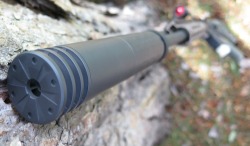
I replaced the classic “bird cage” flash hider with a SilencerCo ASR Muzzle Brake. Not to tame any massive recoil, but that it works as a fast attachment mount to the Omega silencer. The ASR does add a bit more weight at the far end of the barrel, and healthy bite into the deep end of your wallet, but it works great.
Just don’t forget, as I did, that it also requires the ASR mount on the silencer which will not screw directly onto a barrel. You need to swap out suppressor end caps to make the silencer compatible with your mounting system. I grabbed my Omega and bolt gun for a quick hunt only to discover I still had my ASR mount on the suppressor, but I actually count myself lucky to be able to have a problem like that.
Blackout Reloaded
The AK 47 round of 7.62 by 39 is actually a little larger than 30 caliber, about .311 compared to .308 to be more exact) meaning the bullet choices for reloading a 300 BLK are as varied as any other popular 30 cal including the .308 and 30-06. Further, a .223 case can be converted into a .300 Blackout case with a little retooling. Enough so that many 300 BLK aficionados are hitting up their .223/5.56 friends for their brass.
Of course, there is also the SHTF component to having any particular gun. Bugging in is an obvious use for a quiet rifle. But bugging out is a total no-brainer. “Survival of the fittest” is a popular saying that, unfortunately, is backwards. In order to know fitness, you need to know who survived. So really, it is that those who survive have the right fitness. But no matter how you slice this cake, doing anything with less noise is fitness. Lobbing 30-cal lead without blowing out your eardrums is more practical than you can imagine.
Brass Tacks
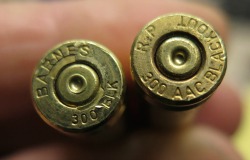
The first outing with the 300 BLK took place out in the sticks of Montana. I found a place up in the mountains where I could set up my gear in the trees providing a safe shooting area. After a couple hours, I spent some time picking up my brass. I noticed how far and what direction the brass flew.
Back home, I was inspecting the brass under a magnifying glass to look for any features or scarring that might indicate problems with the gun. Imagine my surprise when I realized I was holding .300 Blackout brass that was not from my gun. The first indication was a different brand headstamped on the case. Further, some of the same-branded shells were too weathered to have been shot that day, as well there a few with bent throats and dinged case mouths. So there are like minds out there.
.300 Blackout AR-15 Conversion Conclusion
I used the first hunting trip with this gun to test its practicality and shake out any concerns. When fixated on quiet, every little click or squeak is loud. The clicks came from my Magpul stock. It is the base model with no way to lock down the extension setting. And the squeak came from both the Magpul MS-3 sling and the Blackhawk Quick Detach clip I used up front on the Midwest Industries free-float handguard.
In the end, this exploration of the 300 BLK has shown promise, but also a full plate of limitations that will keep it off my shortlist of bug out gear. When facing a significant unknown, my first gun to grab would be my Katrina Rifle, and a close second would be my Katrina Pistol. Third would be my Bug Out Long Term (B.O.L.T.) .22 pistol.
A bug out gun might be fourth, and then probably a long range rifle like a 30-06 would round out the first five. So a .300 Blackout would be somewhere between six and 10 along with a Project Squirrel Gun.
I hope you found this helpful. Sound off in the comments if you tried it, and tell us how it went. And – of course – sign up for our email updates!
Want to know way more? Check out Steve Markwith’s book, Centerfire Rifles: A Buyer’s and Shooter’s Guide – Special AR-15 Section Included
- Markwith, Steve (Author)
- English (Publication Language)
- 264 Pages - 12/03/2016 (Publication Date) - Prepper Press (Publisher)
This article is for informational purposes only, please consult a gunsmith before you make any changes to your rifle.


20 comments
I would love to have a 300 blkt ( and maybe will have one in the near future ), but right now I don’t want to add one more to the mixture. And being on a fixed income doesn’t give me much leeway. But it does sound ( or the lack of sound ) is interesting.
Building or purchasing an entire 300 Blackout upper allows a quick switch between that and the original 5.56 upper. This essentially gives you two rifles in one, the 300 for close up shots and the 5.56 for longer range shooting. I keep the 300 Blackout upper set up with a red dot site for home and personal defense. The 5.56 upper is set up with a 3-9x scope ready in case I need to switch out and make some longer distance shots.
I’ve shot a buddy’s .300BLK supressed SBR with 200-grain gas-checked cast lead bullets – and the trajectory at 1100 fps makes a .45-70 look like a varmint rifle. The difference in POI between subsonic and supersonic ammo at distance is enough of a PITA for me that I probably would gear the .300BLK rifle for one load and leave it set up.
I wonder how much of a horsepower difference there is between a .300BLK with a 190-200 grn bullet at 1100fps and a 9mm carbine with a 147 gran bullet at 1100fps? Enough to matter at under 100 yards?
Or, you could just get you a good semi- or bolt-action .308 rifle and not have to mess with barrel changes since it will do all that the .223/300 BLK combo can do and better! Having an ability to change calibers by changing barrels sounds good but 300 BLK is not a common caliber nor is it likely to be in the near future. If something breaks that is common to both calibers such as the trigger group, you have NO rifle! IMHO, two rifles in the same mid-range to high power caliber is a better choice, stuff happens, usually at a bad time! GLAHP!
If you put a 300 blk barrel on an ar15 everything is ar except the barrel. Same trigger group same upper same lower same bcg. So easy to fix anything on the black lego rifle.
Yeah. I came here looking for info on the blackout because im building my first AR. I have since decided my first will be the 300. As i only will have the one for a while the expenditure for ammo will be the only drawback.
I am surprised usually the first go to caliber would be the 5.56 or the .223, due to the fact that the ammo is fairly cheap and plenty of it. I also am on a fixed income and would love to have a 300 Blackout for more stopping power against a big animal. right now I have settled for the 5.56 until I can put some funds together
Another thought comes to mind about the 300 bkout, seeing as how the 300 is a fairly new setup, what is or will be the availablity of more or extra ammo when and if the poop does hit the fan and who will have it? this is another reason that I myself would stay with the available ammo 223, 308, or 30-06 that has been around a lot longer. But then again, each to their own. Just saying.
Good questions Alfred. One thing to keep in mind is that while 300 BLK ammo is considerably less abundant compared to many other common calibers, it can be manufactured using .223 brass and standard 30 caliber bullets (but remember that 7.63×39 AK bullets are not 30 cal).
Those so inclined have built assembly line jigs in their garage using wood, then using basic shop tools to cut the brass to the right size. Then use a reloading press to reform and enlarge the neck followed by a touch of reaming and polishing. The rest is standard reloading. In fact, many .300 Blackout aficionados request used .223 and 5.56 brass from their AR 15 friends so they make more 300 BLK which is much more cost effective than buying it by the box.
Your style is very unique compared to other folks I have read stuff from.
I appreciate you for posting when you’ve got the opportunity, Guess I
will just bookmark this blog.
The best way to correct the availability of ammo is to load your own. 300blk is a re-loaders dream, you can start with 223/5.56 brass and cut it down and reform it to speck. Any weight projectile from 110gr to 220gr (have seen some 230gr cast) Powder and primers per loading manual. Sub or supers, Just takes time and money. After all it is a hobby for most of us.
Just got my 300 upper, and bolt separately, saved $300, any way, here is what happen, now with reloads, so far, not factory yet, ejection great , but not picking up new bullet in cycling, triggers resets and all, but not picking up bullet, now few things i am going to try are different mag. One i used was given to me, used it because of size, using lead sled, different powder in loads/and or factories, you can see where bolt slides across brass, I was told to try lighter buffer,
Thomas: You need to run some rounds thru it to break it in and use plenty of lube on the bcg.
Also, check out 300blktalk dot com
I have an Ruger 556 that I would like to convert to a Blackout. Can you use any 16 inch barrel to do this? Reason I ask is that the prices on line are as little as $ 79 and the Ruger website has a kit that cost nearly as much as the as entire gun. ($ 400+) Anyone know what it would cost for a gunsmith do this for you?
I also have the same gun and am doing the same thing. From what I’m seeing and what I was told, the only major change is the barrel. The bolt, bolt carrier group, and mags are all the same. I’ve heard some say they had to make some albeit minor changes just for cycling but besides that not much changes. This is entirely what I’ve heard and not what I have done. Like I said I’m just doing this myself for the first time, was always more of an Ak guy (not knocking the Ar) hence the want for a little more “oompf” out of my Ar.
I found this article on the 300 blog very interesting.
What a great writer you are.
Can you do this same barrel swap in a bolt action rifle? In particular I’m thinking about the Mossberg MVP Patrol is being sold in 5.56 and .300blk, and both use AR15 magazines. Is it possible to buy one full rifle and a second barrel, rather than 2 full rifles?
Hi, James. I asked Steve your question and this was his answer:
“Technically, it’s probably possible, but it would be a lot less practical. Looks like Mossberg uses a barrel attachment system similar to a Savage. But the threaded collar has no wrench flats (guessing they use a special fixture). You’d need to continually set headspace anyway, and the sights probably wouldn’t time at zero degrees (dead vertical). Plus, a scope would need to be re-zeroed. In the end you’d be better off springing for a separate Mossberg – or an AR upper if one is on hand. The MVP Patrol is pretty neat though. It would make a killer truck gun.”
Thanks for the info.